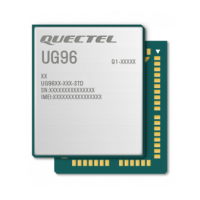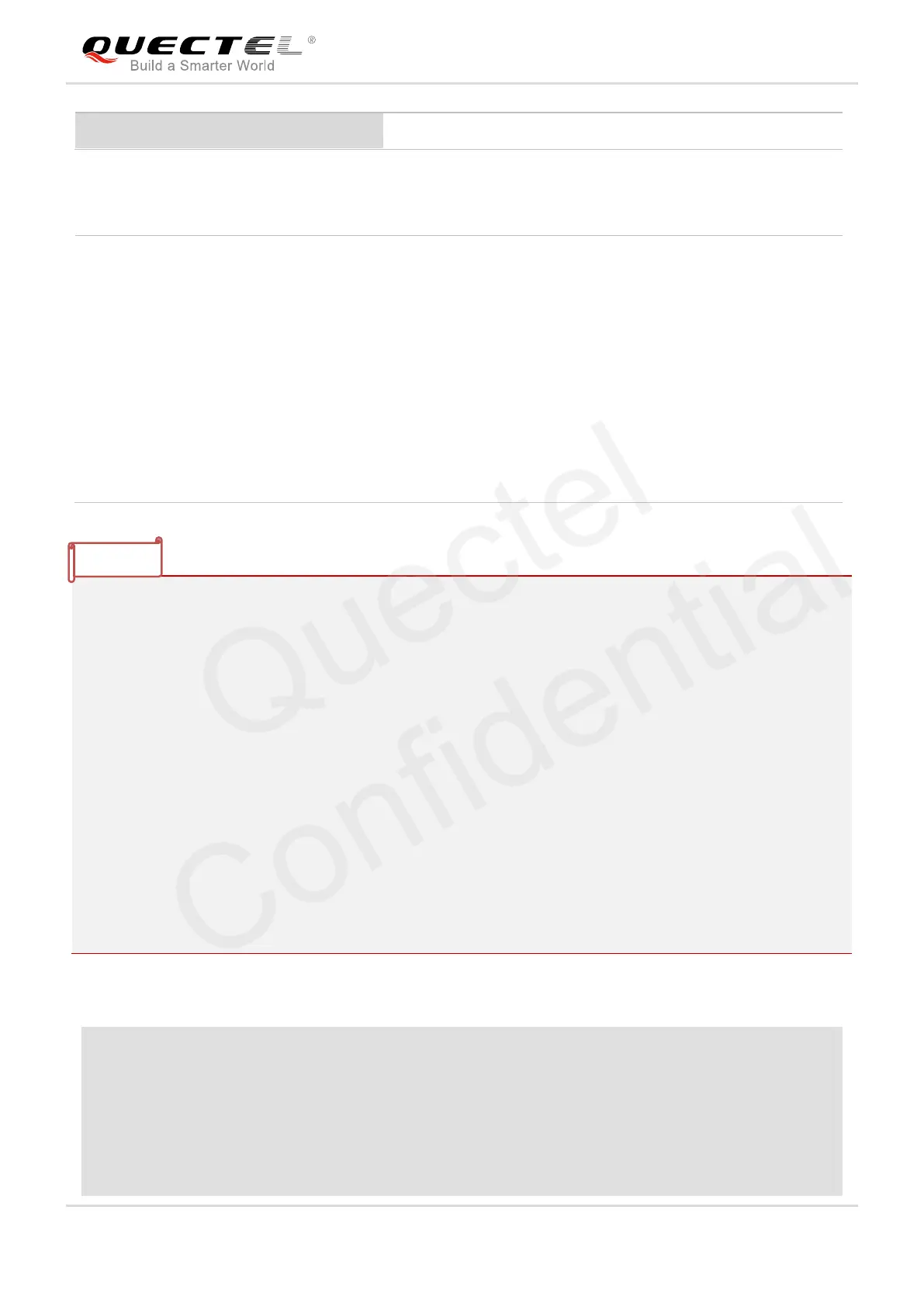UMTS/HSPA Module Series
WCDMA UGxx AT Commands Manual
WCDMA_UGxx_AT_Commands_Manual Confidential / Released 138 / 247
Parameter
<uid> Message identification in the user data header (UDH). Range from 0 to 255. This
parameter is defined and inputted by the user. All segments of a same
concatenated message must have the same <uid>. Different concatenated
messages should have different <uid>.
<msg_seg> Sequence number of a concatenated message. Range from 0 to 7.
<msg_seg>=0 means: ignore the value and regarded it as a non-concatenated
message.
<msg_total> The total number of the segments of one concatenated message. Range from 0
to 7. <msg_total>=0 or 1 means: ignore the value and regard it as a
non-concatenated message.
<da>,<toda>,<mr> Please refer to AT+CMGS
1. For concatenated messages, the maximum length will be reduced by the length of the user data
header (UDH). 3GPP TS 23.040 defines two kinds of UDH length: 6 bytes and 7 bytes, so the two
kinds of <uid> are 8 bit (6 bytes) and 16 bit (7 bytes). AT+QCMGS uses 8 bit <uid>.
In the case of GSM 7 bit default alphabet data coding scheme, the maximum length of each
segment of a concatenated message is (140 octets - 6 )*8/7=153 characters.
In the case of 16 bit UCS2 data coding scheme, the maximum length of each segment is
(140-6)/2=67 characters.
In the case of 8-bit data coding scheme, the maximum length of each segment is 140-6=134.
2. <mr>, Message-Reference field gives an integer representation of a reference number of the
SMS-SUBMIT or SMS-COMMAND submitted to the SC by the MS, and it is used to confirm the
SMS-DELIVER received from SC duplicate or not. <uid>, the field of UDH, is message identification
of the concatenated SMS, which is different from <mr>. Each segment in a concatenated message
should have the same <uid>, but <mr> must be incremented for each segment of a concatenated
message.
3. AT+QCMGS does not support to send message in PDU mode (AT+CMGF=0).
Example
AT+CMGF=1 //Set SMS message format as text mode
OK
AT+CSCS="GSM" //Set character set as GSM which is used by the TE
OK
AT+QCMGS="15056913384",120,1,2 <CR> //Input 120 for <uid>, send the first segment of the
concatenated SMS
>ABCD<Ctrl-Z>
120s, determined by network.

